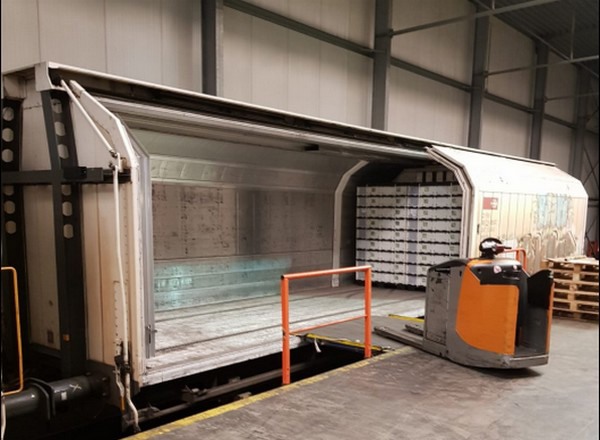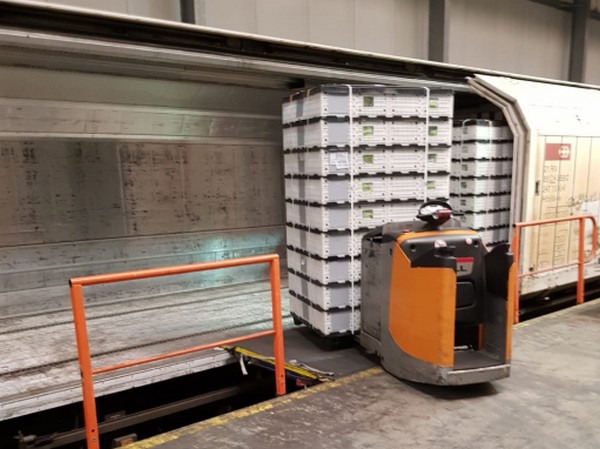Thirty years ago, it was very common to transport bananas by rail in Europe. That type of transport stopped for some time, says Johan Claes, director of the Belgian New Fruit Wharf (BNFW), which focuses on the handling and logistics of mainly bananas. He notices a renewed interest because of rail transport's environmental aspect. "It's a sustainability decision," Johan begins.
"BNFW has been sending bananas to various destinations via rail for 30 years. For years, the longer transit time and higher costs made that an unfavorable form of transport, and trucks replaced it. Yet, especially considering sustainability, there’s now a return to rail."
Johan notes retailers are the primary drivers of this interest. "More retailers are concerned with sustainability, and so, they sometimes choose this slightly less practical but most sustainable solution," he says. The less practical element crops up mainly in organizing rail transport, which Johan says is slightly more cumbersome than chartering, say a truck. "Still, a train wagon can carry ten percent more freight than a truck; 22 pallets vs. 20."
Twice weekly to Switzerland
The renewed interest in rail transport means that for two years now, BNFW has been sending bananas to Switzerland by train twice a week. Johan says a partnership between Dole and the Swiss retailer ensures that every Monday and Wednesday, wagons of bananas leave BNFW and, two days later, arrive at the ripening plant.

Although they are exploring the feasibility of other destinations and BNFW hopes to expand this service, Johan concedes that, for now, Switzerland is the main focus when it comes to transporting bananas by rail. Still, he notes that rail transportation is within reach for many companies. "Bananas in the wagon are cooled in summer and heated in winter, at the correct temperature and with the correct ventilation. A few hours more or less en route doesn't make much difference," he explains.
Southern Germany - where bananas used to be sent by train daily - comes to mind here. However, the company's location is important, Claes points out. It must be close to the railroad so that the receiving party can have its own connection. Bananas are very suitable for transport by train. "You must have at least three to five wagons for rail transport. Then, of course, you're talking about high-volume products, and that's when bananas come in."
Covered loading
BNFW has a rail connection allowing for loading from its warehouse. "We unload the containers, sort the pallets of bananas, and load the wagons. Since the tracks run into the warehouse, it's unique that we can do this inside. We load and seal the railcars and ensure they're operating at the right temperature," Johan continues. The bananas are transported in reusable plastic crates. "They go to Switzerland in plastic crates, the crates come back folded, in the same rail cars, and are then returned to the country of origin in containers for reuse."
He admits that occasionally, you cannot transport bananas by rail, like when the rail line was interrupted in the summer of 2022 because of flooding. "The detour was too long, so we chartered a truck. The line has since been repaired, and the weekly service is running again. It's annoying when the train can't run, but it's not a disaster. When there's a problem, we simply get a truck. We're flexible in that," Johan concludes.
For more information:
Johan Claes
SEA-invest
Tel.: +32 475 620446
[email protected]











